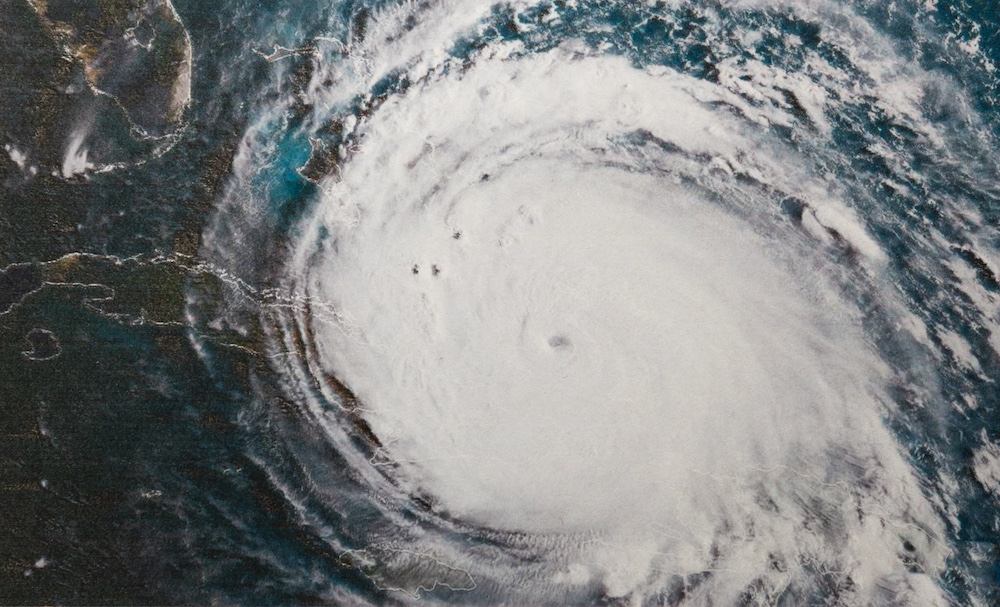Ahead: More – and Worse – Katrinas
Thomas Homer-Dixon, James Risbey and Karl Braganza
Globe and Mail
The science of climate change is the kind of topic that gives journalists great difficulty. As they bounce from issue to issue in our info-glutted world, they aren’t able to explore each one in depth or develop detailed expertise about a subject. So when it comes to complex scientific problems, journalists tend to cherry-pick findings and cite opinionated statement by outspoken researchers. Context and nuance are lost. And in the case of research on the links between global warming and hurricanes, context and nuance are everything.According to some of The Globe and Mail’s columnists and its editorial board, recent research shows little or no relationship between global warming and hurricanes. This conclusion may reassure the paper’s readers, but it’s wrong.
So what does the research really say? First, we have to distinguish between single events and general trends. Any isolated weather event like hurricane Katrina is caused by a multitude of converging meteorological factors. If global warming indeed played a role in Katrina’s development and viciousness, it was only as one factor among many. Nevertheless, we can say that Katrina, considered in the context of other hurricanes, was consistent with general trends predicted by climate-change theory, models and observations.
In 1987, scientist Kerry Emanuel of the Massachusetts Institute of Technology used climate-change theory to show that tropical hurricane intensity should rise with higher global average temperatures. Usually, hurricane intensity is measured by maximum surface wind speeds. Prof. Emanuel predicted that hurricane wind speed would rise by about 5 per cent for every one-degree-Celsius increase in tropical ocean temperature.
Early mathematical models of Earth’s climate didn’t have enough resolution to simulate hurricanes properly, and they didn’t show a clear effect from global warming. But more recent modelling by Tom Knutson and others at the Geophysical Fluid Dynamics Laboratory at Princeton University supports Prof. Emanuel’s theoretical findings. It shows a similar tendency for hurricane intensity to rise as sea-surface temperature increases.
The missing link to date has been observation of changes in the real world. As The Globe’s editorial writers and some columnists have noted, scientists have found little or no trend in recent hurricane behaviour. But most of these studies have looked for changes in the frequency of hurricanes — that is, in the number of hurricanes over a given period of time. Such trends are hard to observe in any specific region over a period as short as a few decades, because fluctuations in the number of hurricanes from year to year are large, while the total number of hurricanes each year is relatively small.
Until this year, there were few reports of observed changes in the intensity of hurricanes. In August, however, Prof. Emanuel filled this gap with a new paper in Nature, one of the world’s leading scientific journals. The meteorologist developed a measure of a hurricane’s destructive potential, based on the storm’s total dissipation of energy over its lifetime. Applying this measure to hurricane data for the past 30 years, he found that the energy released by the average hurricane worldwide has increased by about 70 per cent, because of the combined effect of a 15-per-cent increase in the maximum wind speed and a 60-per-cent increase in storm lifetime. The potential destructiveness of storms, he concludes, has “increased markedly” in recent decades, and “is highly correlated with tropical sea-surface temperature, reflecting well-documented climate signals including global warming.”
Tropical oceans have warmed about half a degree Celsius in the past half-century. This increase, in turn, is widely attributed to the rise in concentrations of greenhouse gases in the atmosphere. Prof. Emanuel concludes that future warming may lead to an upward trend in hurricanes’ destructive potential. And an important paper published just last week in the journal Science reinforces this conclusion: Peter Webster and his colleagues at the Georgia Institute of Technology in Atlanta show that the worldwide frequency of the most destructive hurricanes — categories 4 and 5 — has nearly doubled in the last 35 years.
So there’s now evidence from theory, models and observations pointing to a link between global warming and changes in hurricane behaviour — specifically, increases in hurricane destructiveness. Once again, this doesn’t mean we can say global warming caused Katrina, any more than we can say it didn’t cause it. The number of hurricanes crossing the U.S. coast is a small fraction of the global total, and we shouldn’t extrapolate from larger trends to such a small sample, let alone to a single storm. Still, we can say that the observed global increase in hurricane intensity in recent decades is likely a consequence, in part, of global warming. We can also say that this trend will likely continue — there will be more Katrinas — as the climate continues to warm.
As it turns out, in Katrina’s case, we can be a bit more specific. Hurricanes thrive over warm water, because they suck energy from the ocean. If they move over cooler water, or if they stir up the ocean so much that deep cold water rises to the surface, their intensity falls. Under normal circumstances, the Gulf of Mexico is cool enough to apply such a brake. But when Katrina passed over the Gulf, the water was warmer than usual — perhaps by one or two degrees Celsius — so the usual brake wasn’t applied. In fact, we’ve determined that the Gulf’s sea-surface temperatures in August were the warmest since 1998, and the second-warmest since satellites began recording these temperatures in 1982.
Again, while we can’t say that global warming was specifically responsible for this unusually warm Gulf water, we can say that the warm water was consistent with global warming and that sea-surface temperatures will likely rise more in the future. We can also say that as global warming heats the column of water beneath the ocean surface, it reduces the amount of braking that occurs when these waters are stirred up by hurricanes.
In short, global warming is creating conditions in which storms of greater destructive potential are more likely. Denying this link is foolish. It flies in the face of what we have learned from climate theory, models and observation. And it increases the risk that our coastal zones will be unprepared for the fury of future hurricanes.
James Risbey is a climate systems research scientist at the Commonwealth Scientific and Industrial Research Organization in Hobart, Australia, and Karl Braganza is a climate scientist based in Melbourne. They recently completed a major study at Monash University on the detection and attribution of regional climate change.

Topics
Climate Change
Energy
Environmental Stress and Conflict
